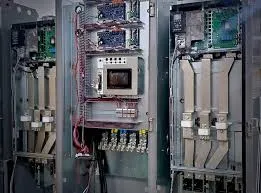The Importance of High Voltage Warning Tape in Safety Protocols
High voltage areas are essential in various industries, from electrical engineering to construction and telecommunications. However, they pose significant risks to workers, technicians, and even the general public if proper safety measures are not observed. One of the simplest yet most effective safety tools used to communicate danger is high voltage warning tape. This brightly colored tape plays a pivotal role in promoting awareness and preventing accidents.
Understanding High Voltage Warning Tape
High voltage warning tape is a type of adhesive tape that is primarily used to alert individuals about the presence of high voltage electrical infrastructure. Typically, this tape is made of robust materials that can withstand environmental wear and tear, such as weather conditions, UV rays, and physical abrasion. The tape is often brightly colored, featuring colors like yellow, red, or orange, coupled with clear and bold lettering that states warnings such as Danger High Voltage or Electrical Hazard.
This tape is not just aesthetic; the color coding and messages are scientifically and strategically designed to grab attention quickly. Colors are known to provoke specific responses—red often signals danger, while yellow suggests caution. This psychological aspect enhances the tape's effectiveness in communicating warnings.
The Role of Warning Tape in Safety Protocols
High voltage warning tape serves several critical functions in safety protocols. Firstly, it acts as a visual barrier that alerts personnel to the potential risks associated with high voltage equipment or areas. When properly placed around hazardous zones, it creates a clear demarcation that helps workers identify areas that require heightened caution. This is especially important in environments where multiple trades might be working simultaneously, increasing the chances of accidental contact with dangerous equipment.
Secondly, the use of warning tape actively promotes a culture of safety in the workplace. By implementing high voltage warning tape, organizations show a commitment to protecting their employees and minimizing workplace accidents. This not only boosts morale among workers but also reassures them that their safety is a priority. Conversely, a lack of proper signage and warning measures can result in confusion and negligence, leading to serious injuries or fatalities.
high voltage warning tape

Compliance with Safety Regulations
In many regions, the use of high voltage warning tape is regulated by occupational safety guidelines. Regulatory bodies mandate specific standards for signage and warnings around electrical installations. Compliance with these regulations is crucial for companies, as failure to adhere can result in hefty fines, legal action, and increased liability. Using high voltage warning tape is often a straightforward and cost-effective method of ensuring compliance while enhancing worker safety.
The Importance of Proper Application
However, simply using high voltage warning tape is not enough. Proper application is vital to its effectiveness. The tape should be placed in visible, strategic locations, clearly marking the perimeter of dangerous areas. It should be used in conjunction with other safety measures, such as training and education for workers about the risks of high voltage electricity. Regular inspections of the tape should also be conducted to ensure it remains visible and intact. If the tape becomes worn, faded, or damaged, it needs to be replaced promptly to ensure ongoing safety enforcement.
Beyond Electrical Hazards
While commonly associated with electrical hazards, high voltage warning tape can also be utilized in various other contexts where similar risks are present. For example, in construction sites, it can be used to mark areas under heavy machinery operation or locations where hazardous materials are stored. It serves as an important tool that transcends industries and can be adapted to fit various safety requirements.
Conclusion
In summary, high voltage warning tape is a critical component of safety in environments that deal with electricity and other hazards. Its bright colors and clear messages help raise awareness and prevent accidents, making it an indispensable tool in any workplace that prioritizes safety. By understanding its significance and ensuring its proper use, companies can foster a safer work environment, ultimately protecting their most valuable asset their workforce.
-
XIANGFAN Rubber Tape-Ultimate Solutions for All Your Insulation NeedsNewsJun.24,2025
-
XIANGFAN Rubber Tape-Protection for Industrial and Residential ApplicationsNewsJun.24,2025
-
XIANGFAN Rubber Tape: Superior Safety and Sealing for Demanding EnvironmentsNewsJun.24,2025
-
XIANGFAN Rubber Tape: Reliable Solutions for Every Electrical ChallengeNewsJun.24,2025
-
XIANGFAN Electrical & Industrial Tape: Powering Reliability Across IndustriesNewsJun.24,2025
-
XIANGFAN Electrical & Industrial Tape: Excellence in Every ApplicationNewsJun.24,2025
